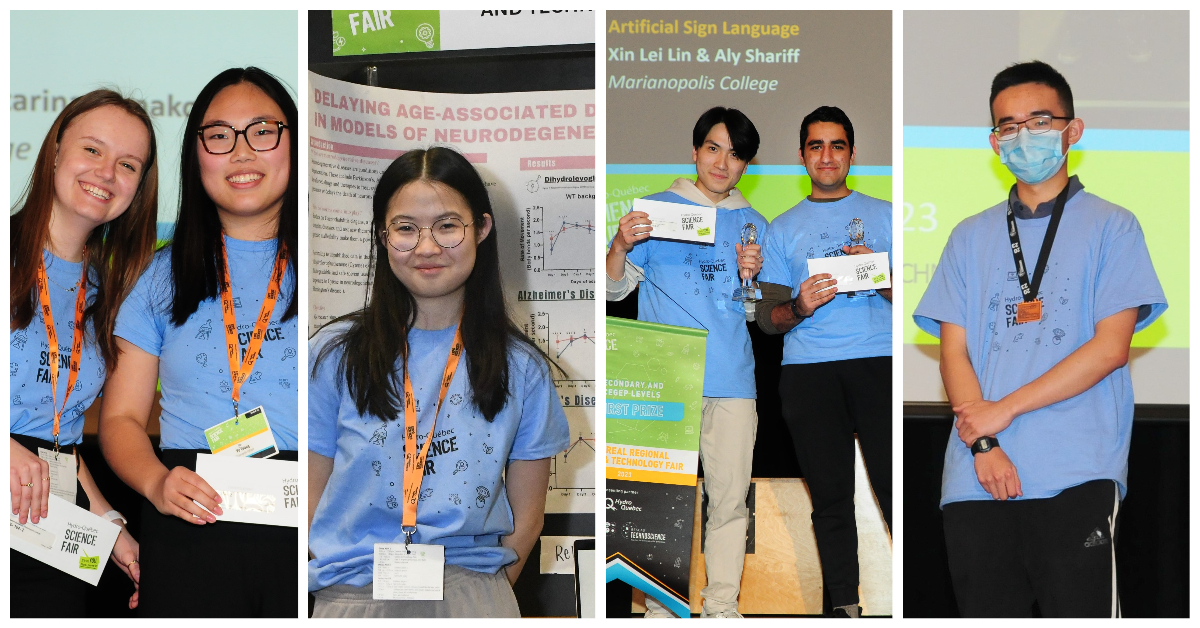Marianopolis science students had the opportunity to show off their research skills last week at the Montreal Regional Science and Technology Fair.
Pure & Applied Science students Xin Lei Lin and Aly Shariff won First Place – Best Overall Project Award for their work developing a Mobile Assistant for American Sign Language (ASL) users. They also won the Collegiate Gold Medal, the Gina Cody School of Engineering and Computer Science Award, Regeneron International Science & Engineering Fair (ISEF) Participation Award, the Réseau Action TI – Youth Award in Information Technology and the Super Expo-science Hydro Québec (SESHQ) Experimentation & Design Award.
Health Science student Rebecca Li’s research on neurodegenerative diseases earned her the Collegiate Silver Medal, the McGill Faculty of Medicine and Health Science Award, the McGill University Department of Biology Award, and the McGill University Redpath Museum Award. She also won the Super Expo Science Hydro Québec Experimentation & Design Award.
Pure & Applied Science student Wenhe Zhang’s project on the effects of spark discharges in dielectric liquids won the Collegiate Bronze Medal as well as the McGill University Faculty of Science Award, the McGill University Math and Statistics Award, and the McGill University Physics Award. He also received the Regeneron ISEF Participation Award and the SESHQ Experimentation & Design Award.
Health Science student Katarina Bunakova and Pure & Applied Science student Yu Ran Wang’s work on redesigning prosthetics using Freedom of Constraint Topology (FACT) won the McGill University Faculty of Engineering Award and the Super expo science Hydro Québec Experimentation & Design Award.
All four student entries earned Highest Distinction from judges and are advancing to compete in the SUPER Expo-sciences Hydro-Québec provincial final on April 21,22 and 23 at Université de Montréal’s CEPSUM.
Read more about our students’ award winning projects below!
Artificial Sign Language: A Mobile Assistant for ASL Users
Xin Lei Lin and Aly Shariff
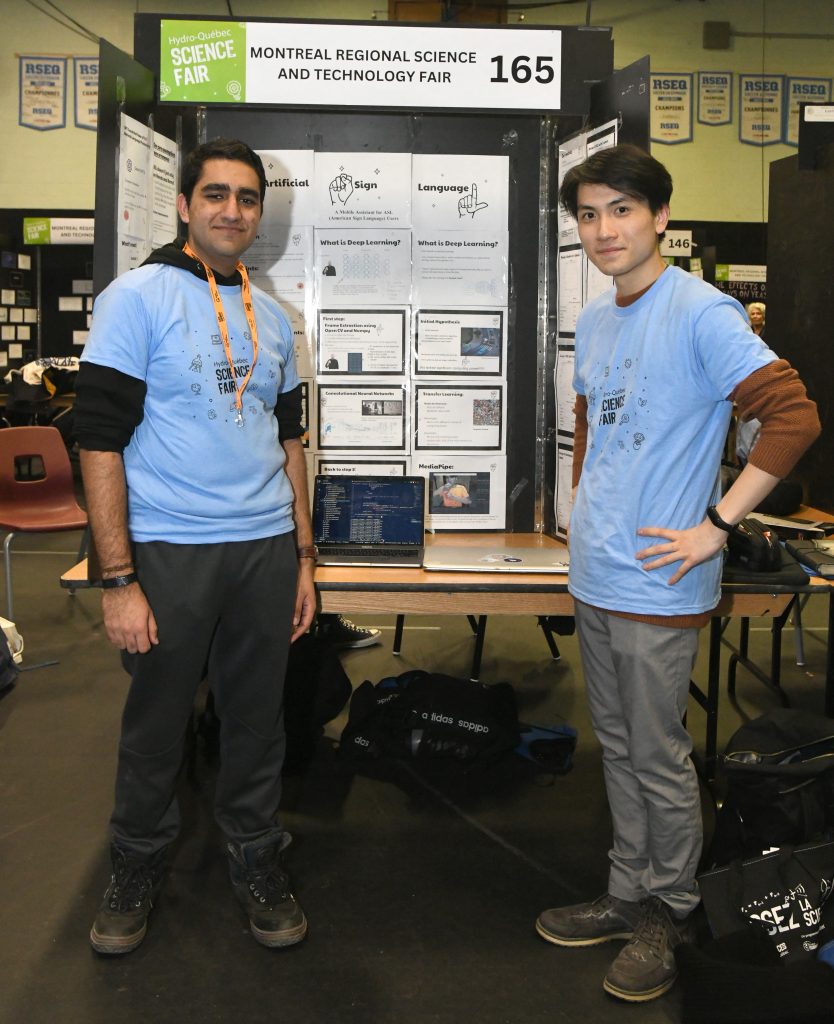
In Canada and the United States, about 500,000 people use American Sign Language (ASL). ASL users sometimes have to rely on translators or interpreters to communicate. The lack of reliable translating or interpreting devices has the potential to significantly impact the independence of ASL users.
Most technological approaches to bridging communication barriers for ASL users have sought to introduce sign language to newcomers. However, these systems often do not encapsulate the many different use cases of ASL.
This project addresses this technological gap through the use of two machine learning models. First, a visual transcript of hand signs and other physical features is established to accurately return a string of words. Since these words are not grammatically legible, a second natural language processing model is created to palliate the translation barrier. Such models are trained through rigorously treated datasets to limit the necessary processing input. They could potentially be integrated into mobile applications by directly using phone cameras.
Delaying Age-Associated Movement Decline in Models of Neurodegeneration
Rebecca Li
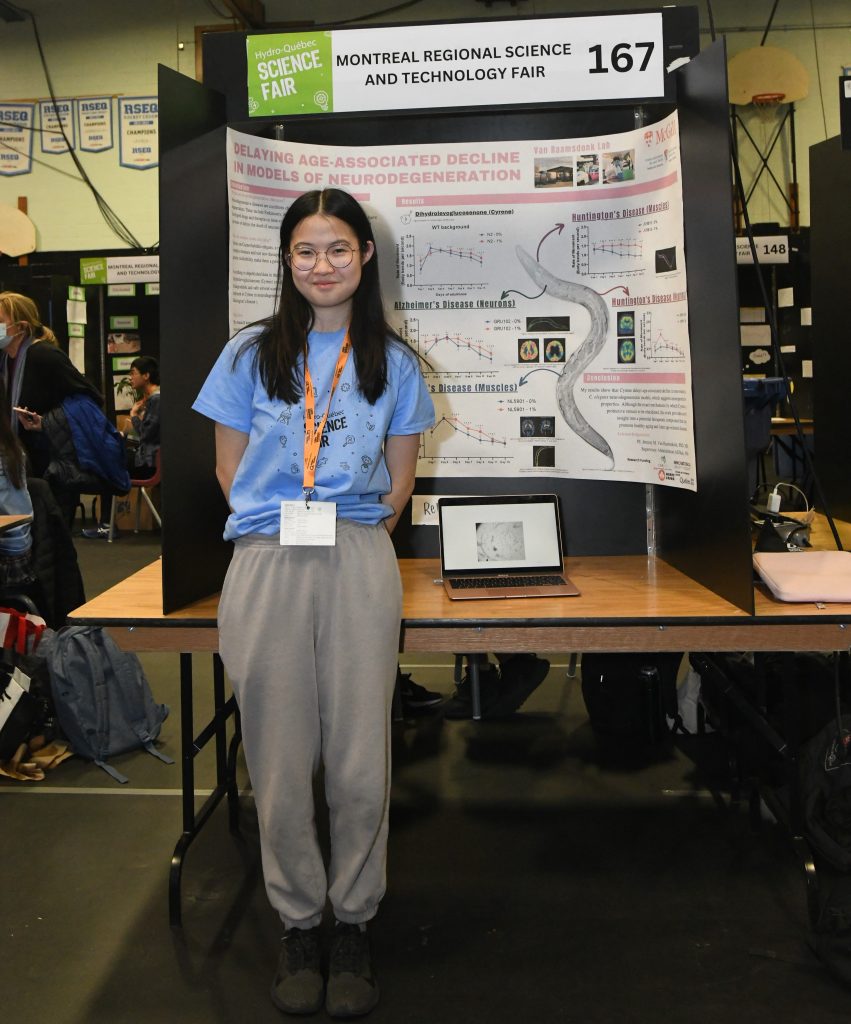
This project focuses on neurodegenerative diseases by using DNA-modified C. elegans (a type of very small worm). These worms are modeled to recreate certain pathogenic abnormalities in humans. The project demonstrates that exposure to a chemical compound called dihydrolevoglucosenone (commercially called Cyrene), sees neurodegenerative models of C. elegans experience delay in age-associated decline in movement. Although the exact mechanisms by which Cyrene is protective remain to be elucidated, results provide novel insight into a potential therapeutic compound that may promote healthy aging and limit age-related diseases.
Effect of External Magnetic Field on Electrical Characteristics of Spark Discharges in Deionized Water
Wenhe Zhang
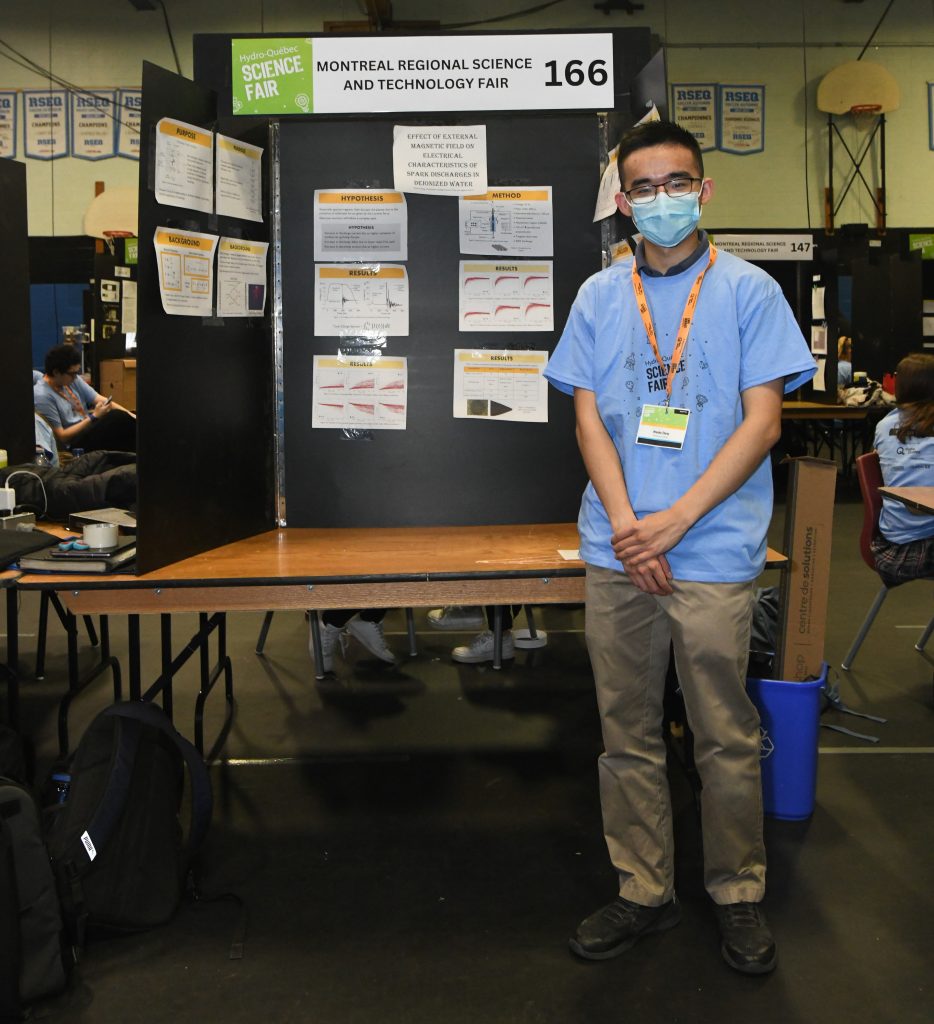
Spark discharges in dielectric liquids have gained significant interest due to their applications in nanomaterial synthesis and electrical discharge machining (EDM). In particular, EDM processes show higher efficiency with an externally applied magnetic field. However, the mechanism of discharges in water is complex due to the many interactions between plasma and liquid species.
The lack of understanding and control of spark discharges limits their widespread applications in industry. This project aims to study the influence of magnetic field on electrical characteristics of discharges and material properties of electrodes in order to provide insights into better control of discharges under a B-field.
To conduct the study, pulsed discharges in deionized water were performed on nickel electrodes and neodymium magnet (NdFeB) with two configurations of B-field (perpendicular and parallel to the electrode) at interelectrode distances ranging from 50 µm – 400 µm. Electrical characteristics, such as breakdown voltage and peak current, were measured for each discharge using an oscilloscope. The shape, radius, and chemical composition of the impact on electrodes and magnets were also recorded.
Results indicate that discharges and impact craters are strongly influenced by both orientations of the magnetic field. This research provides new insights into understanding spark discharges in liquid and controlling the magnetic field in EDM processes to obtain desired results.
It’s Going TiBia Ok: Prosthetic Design Using Freedom and Constraint Topology (FACT)
Yu Ran Wang and Katarina Bunakova
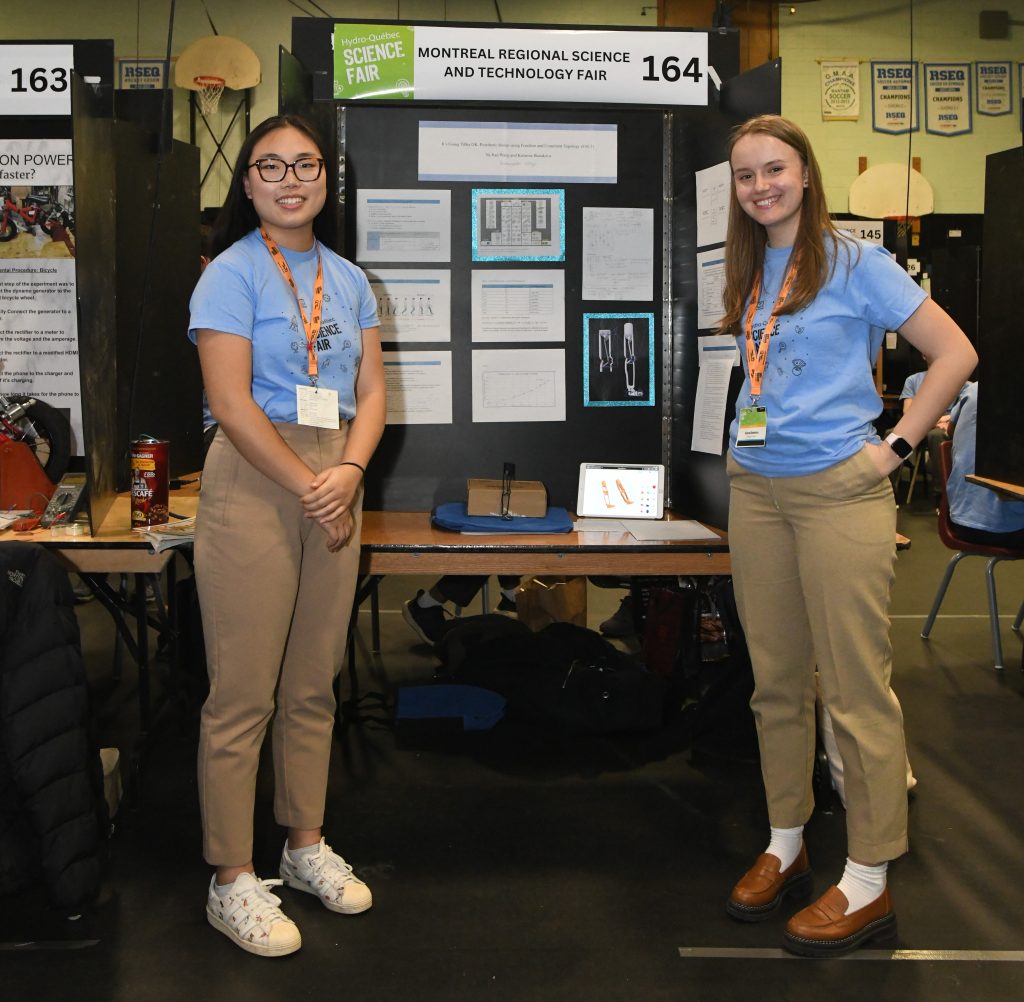
Prosthetics are heavy, expensive and reliant on electrical components, which can make them inaccessible for many people.
This project suggests that redesigning prosthetics using compliant mechanisms allows them to mimic human muscles and joints while increasing comfort and lowering production costs and assembly time. This approach also provides greater space for customization based on the individual’s height, weight, gait, etc.
The project design was created using the Freedom and Constraint Topology (FACT) method, with flexible elements analyzed using stiffness and twist-wrench matrices. The final prototype showcases all of the desired motions. This novel approach has the potential to increase amputees’ quality of life.

